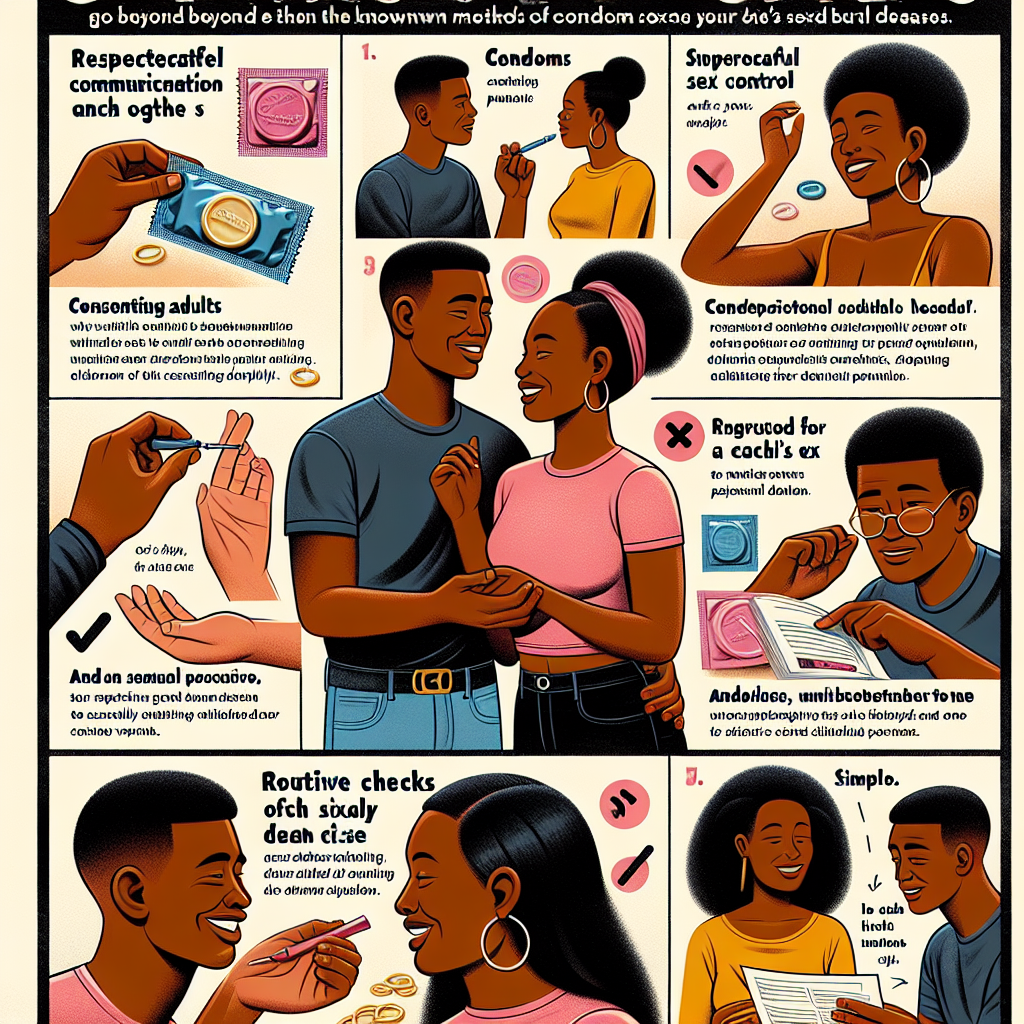Safe Sex Practices: Beyond Condoms and Birth Control
When it comes to safe sex, most of us immediately think of condoms and birth control pills. While these methods are vital, there’s much more to creating a holistic approach to sexual health and safety. In today’s world, understanding a variety of safe sex practices is crucial. Let’s dive into how you can protect yourself and your partner beyond the usual suspects.
Explore Other Barrier Methods
Sure, condoms are the most well-known barrier method, but they aren’t the only players in town. Dental dams, female condoms, and even non-latex alternatives are options worth considering. Each of these provides a physical barrier that can protect against sexually transmitted infections (STIs).
- Dental Dams: These are especially useful for oral sex. They’re thin sheets that you can place over the genitals or anus to create a barrier between you and your partner.
- Female Condoms: Inserted inside the vagina, these provide internal protection, allowing for more control for the person receiving penetration.
- Non-Latex Condoms: Ideal for those with latex allergies, these condoms offer STI protection without the allergic reaction.
Get Regular STI Screenings
Think of STI screenings as regular check-ups for your sexual health. The only way to know if you or your partner have an STI is through testing. Regular tests can significantly reduce the risk of unknowingly spreading infections, and they show that you are committed to responsible and safe sex practices.
The Power of Communication
Yes, talking about sex can feel as awkward as a giraffe on roller skates, but it’s undeniably essential. Clear communication with your partner about boundaries, STI status, and contraception can build trust and ensure both parties are comfortable with the practices in place. Here are some to consider:
- Discuss your sexual history openly yet tactfully.
- Agree on methods of protection before getting intimate.
- Make sure you’re both aware of each other’s STI testing results.
Exploring Intimate Alternatives
Sex doesn’t always mean penetration. Exploring other forms of intimacy can be gratifying and exciting. This can include mutual masturbation, body rubs, or outercourse—a fancy way of saying all the stuff except vaginal or anal penetration. Not only do these practices reduce STI risk, they also introduce a new level of excitement in the bedroom (or wherever you choose to explore).
Stay Informed About Mature Content and Its Impact
In today’s digital age, we have unprecedented access to adult content, which can shape our perceptions of safe sex practices—often in ways that aren’t realistic or healthy. Websites and channels that offer mature content, like Popular Mature Content Telegram Channels, can sometimes reinforce myths about safe sex. It’s key to understand that the scripted scenarios you see don’t necessarily reflect safe or consensual practices in the real world. Use such content responsibly and understand its fiction from reality.
Commit to Continuous Learning
The world of safe sex is ever-evolving. New studies, methods, and understanding emerge regularly. Staying educated about these changes can help you continue making informed decisions about your sexual health. Books, online courses, or workshops about sexuality and relationships can deepen your understanding and enhance your well-being.
Lastly, remember, safe sex is not just about avoiding diseases or preventing pregnancy—it’s about respect. Respect for yourself and your partner, taking care of each other while enjoying one of life’s most beautiful expressions. So gear up, read up, and keep it safe, consensual, and most importantly, enjoyable!
